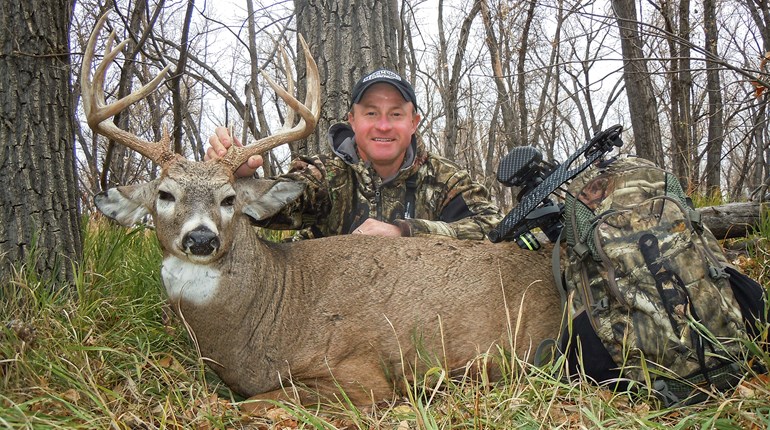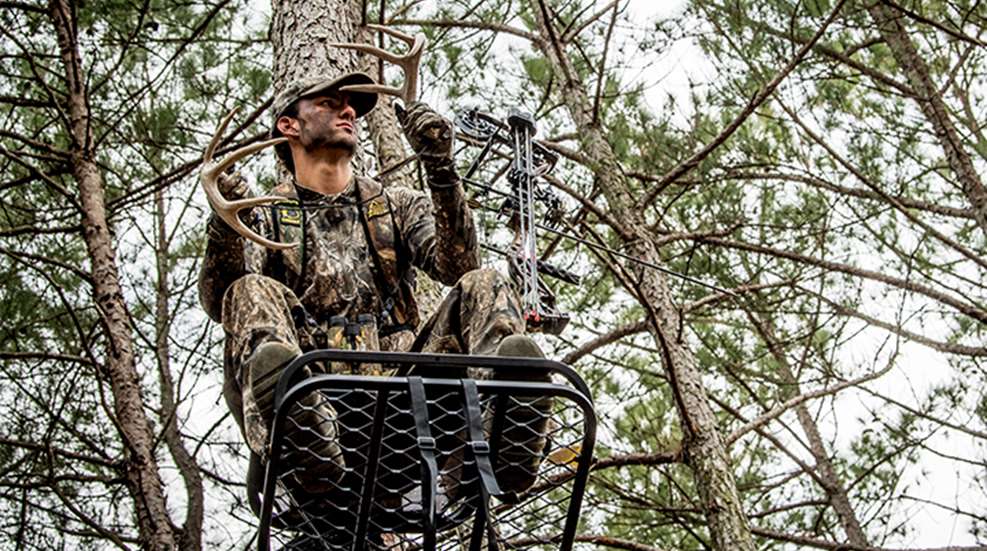
We oftentimes see deer season forecasts for the United States, but not Canada. That’s unfortunate, too, because many Americans travel northward across the border to chase these elusive big-woods whitetails. Of course, last season, the border was closed, and non-residents couldn’t hunt Canadian whitetails. Now, that’s changed, and Canada is open for business. And, of course, we hope for a successful season for Canadian residents, too. So, here’s a breakdown of each province, and what the experts believe each province has to offer.
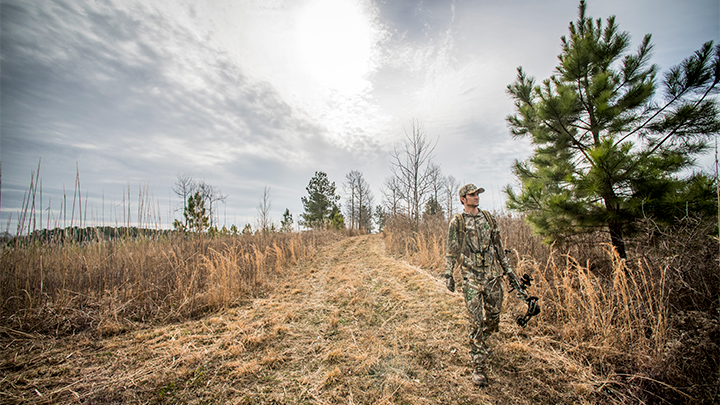
Alberta
• Resident Costs: $41.95
• Non-Resident Costs: $214.03
• Boone & Crockett Entries: 608 (typical and non-typical)
The province of Alberta is one the most popular destinations Canada has to offer. It’s right up there with Saskatchewan. Rob Corrigan, the provincial big game specialist with the Alberta Environment and Parks Department, agrees. In 2020, only 100,000 resident deer hunters went afield, and zero non-residents. A lot of bucks survived because of it. Corrigan expects big things this fall.
“Generally, our deer populations provincially are increasing after a number of successive mild winters,” Corrigan said. “2021 should be a very good year for deer hunting in Alberta. Although there were certain areas that experienced a hard winter with winter kill, for the most part, the winter was mild, and our deer populations faired very good coming through the winter.”
Hunters should be aware of some challenges that deer are currently facing, though. Chronic wasting disease (CWD) is chief of those.
“CWD remains the greatest challenge to our deer populations, especially mule deer,” Corrigan said. “CWD surveillance during the 2020 showed that it continues to spread north and west. CWD was identified in new areas of Alberta through our 2020 surveillance program.”
Information on CWD in Alberta can be found at: alberta.ca/chronic-wasting-disease-information-for-hunters.aspx.
Overall, things are looking up for 2021, though. “Alberta offers excellent deer hunting opportunities throughout our province and have the opportunity to pursue deer in a diversity of landscapes and habitats,” he concluded.
British Columbia
• Resident Costs: $47
• Non-Resident Costs: Varies
• Boone & Crockett Entries: 87 (typical and non-typical)
One province to the west, things are looking up for British Columbia, too. Stephen Maclver with the Ministry of Forests, Lands, Natural Resource Operations, and Rural Development, says the population is doing well. Whitetails are numbered about 82,000-130,000, and mule deer are approximately 100,000-170,000 strong.
Generally, the region sees a total of 100,000 deer hunters, which is somewhat high for the total number of deer. Still, the annual harvest is pretty good, all things considered.
“B.C. is a large jurisdiction, about 1 million square kilometers, with coastal rainforests, grasslands, forests, alpine and many other types of habitats,” Maclver said. “It isn’t possible to give a general trend for such a large and diverse province. Depending on where you are populations may be stable, decreasing or increasing.”
That said, the 2021 season should be strong. He says deer are throughout the province, and practically anywhere can potentially hold the caliber of deer a hunter may be looking for.
What’s even better is that approximately 95 percent of B.C. is public land and deer are distributed throughout most of these areas. All hunters need to do is scout and familiarize themselves with the area of interest, as well as the regulations for these locations. Hunting tactics should vary based on habitat type, such as coastal, grasslands, alpine, forested, etc.
Furthermore, this province doesn’t have CWD yet, and that’s huge. “CWD has not been detected in B.C. to-date,” Maclver said. “However, there are occurrences close to the border in other jurisdictions. In some areas of the province, close to the borders with Alberta and Montana, hunters are required to submit the heads of harvested deer for CWD testing.”
Keep that in mind if hunting close to the border.
New Brunswick
• Resident Costs: $34 (plus tax)
• Non-Resident Costs: $183 (plus tax)
• Boone & Crockett Entries: 41 (typical and non-typical)
New Brunswick isn’t usually the first province deer hunters think of, but it offers opportunity. Located just north of Maine, this is cold big-woods country. Joe Kennedy, a biologist with the government of New Brunswick, says this season holds promise.
The deer herd is currently about 100,000 and increasing. Like most years, about 45,000 hunters will go up against them this season. Kennedy expects a 5-10 percent increase in harvest this fall.
Those who are seeking overlooked but up-and-coming hotspots should consider southern portions of the province. Those wanting to hunt established big buck areas might remain focused on the central region.
All in all, New Brunswick is less crowded than some provinces. If you’re looking to change things up this season, and you don’t mind a challenge, give it a try.
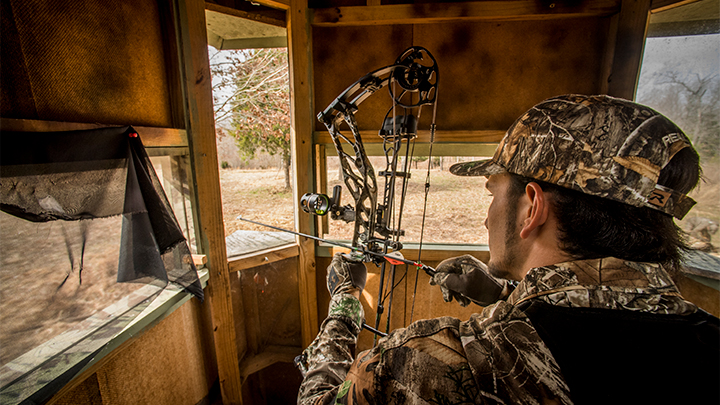
Saskatchewan
• Resident Costs: $40
• Non-Resident Costs: $130
• Boone & Crockett Entries: 883 (typical and non-typical)
Over to Saskatchewan, Tom Perry, wildlife biologist with the Fish, Wildlife and Lands Branch, Ministry of Environment, expects a great fall and winter. While the provincial deer population total is largely unknown, things are seemingly on the upswing.
Survey data also points to increasing whitetail populations across most of Saskatchewan. “Recent aerial survey white-tailed deer density estimates range from 0.5 to 1.5 deer per square kilometer in suitable habitat in Parkland and Grassland regions of the province,” he said. “Be patient. It’s a low deer density in Saskatchewan, though the buck of a lifetime could step out at any moment.”
Generally, the hunter numbers are lower than neighboring Alberta. The five-year average is 45,250 whitetail hunters. The outlook looks good for these outdoorsmen and women. Those who are looking for top-end deer will find these throughout the province, but urban wildlife management zones offer hidden trophy potential.
Like in Alberta, Perry says CWD continues to be an issue for deer management and hunting. It isn’t going away, either. For now, it seems it’s here to stay.
“Hunters should make sure to consult the 2021 Saskatchewan Hunting and Trapping Guide to make sure they are compliant with the Provinces Rules and Regulations,” Perry concluded.
Ontario
• Resident Costs: $49.56
• Non-Resident Costs: $266.47
• Boone & Crockett Entries: 108 (typical and non-typical)
Ontario is another overlooked whitetail destination in Canada. But giants live here. And generally, there are fewer than 200,000 total hunters in the field.
After consulting with Ontario biologists Brad Allison, Kevin Kilgour and Erin MacDonald, it’s clear that deer herds are doing well. While the northern region is outside of the typical whitetail range, it’s the only region of the province that’s underperforming.
“Across most of NWR core deer range, winter 2021 was classified as mild,” Allison said. “Deer in the Kenora, Fort Frances and Dryden areas experienced mild winter conditions, while in core deer range around Thunder Bay, deer experienced moderate winter conditions. In general, winter 2021 should have limited impact on deer abundance in this portion of NWR. Outside of the core range (where deer abundance is low), mild winter conditions were observed in the southern portion of Red Lake and Sioux Lookout Districts, moderate winter conditions were observed on the western side of Lake Nipigon and severe conditions north of Lake Superior.”
The southern region, which is the stronghold, is doing quite well, and remains stable. “The winter conditions for 2021 were average and not considered to be severe, relative to historical records,” Kilgour said. “Based on the provincial Snow Depth Index, winter in the central part of the region was moderate and considered mild in the remaining areas within the region. Winter conditions were not predicted to contribute to significant deer mortality. Snowmelt was early compared to previous years, with most snow gone by the end of March, resulting in an early spring and green-up which would benefit white-tailed deer. Based on winter and spring conditions, the deer hunt for 2021 should be similar [or] better than previous years, depending on weather conditions during the deer season.”
Regarding big-buck hotspots, those hunting in the northwestern region might consider Kenora, Dryden, Fort Frances and Thunder Bay WMUs. In the northeast, Manitoulin Island (WMUs 43A and 43B) and St. Joseph Island (WMU 45) are popular options. Unfortunately, the southern region is dominated by private lands. Seek an outfitter for advanced opportunities.
“The Ontario Crown Land Use Policy Atlas is a good starting point for those looking for Crown land hunting opportunities, which are primarily located in the central region,” MacDonald said.
Fortunately, unlike other provinces, CWD isn’t a problem here yet. “At present, there is no evidence that the disease is in Ontario despite sampling over 13,600 wild cervids since 2002,” they said. “Ontario’s CWD surveillance program follows an adaptive, coordinated approach to the actions [we] will take in partnership with other agencies to minimize the threat posed by CWD, and to protect the significant socio-economic, cultural and ecological benefits provided by Ontario’s wild deer, moose, elk and caribou.”
Manitoba
• Resident Costs: $50.25 (plus tax)
• Non-Resident Costs: $241.75 (plus tax)
• Boone & Crockett Entries: 157 (typical and non-typical)
Located in central Canada, Manitoba doesn’t get the credit it deserves. This is a solid place to deer hunt. Those who think to hunt here oftentimes experience success.
While you can’t hunt mule deer, whitetails are fair game. In the southern half of the province, these animals are somewhat abundant, at least for this far north. Hunter numbers are relatively low, too, generally ranging from 28,000-33,000, so the hunting pressure isn’t terrible.
Like in other provinces, foreign citizens looking to hunt here must be accompanied by a guide. Other restrictions apply, too.
Those who are focused on public lands have plenty of options, though. “Wildlife Management Areas (WMAs) are Crown lands designated under The Wildlife Act for the better management, conservation and enhancement of wildlife in Manitoba,” said a Manitoba wildlife agency representative. “All WMAs have a role to play in conserving biodiversity and providing habitat for wildlife. Today, more than 80 WMAs have been established. The system has grown to encompass almost two million hectares (five million acres) of valuable wildlife habitat throughout Manitoba. Many WMAs are protected from commercial forestry, mining, and hydroelectric development, contributing to the province’s Protected Areas Initiative.”
That said, remember that some parks and WMAs are closed to hunting. Check the hunting regulations for specific information.
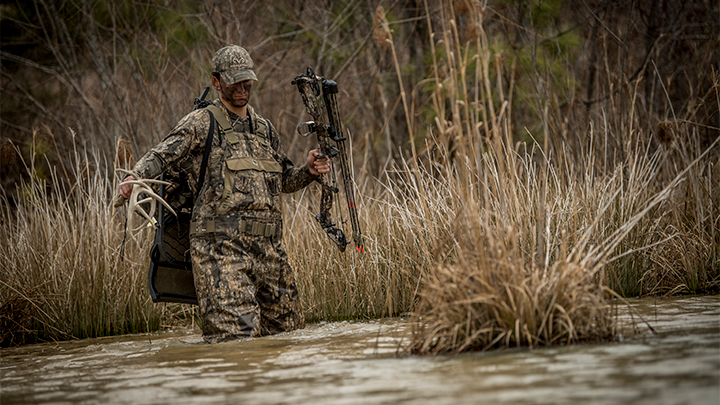
Nova Scotia
• Resident Costs: Varies
• Non-Resident Costs: Varies
• Boone & Crockett Entries: 24 (typical and non-typical)
A small island-like land mass in the eastern stretch of the country, Nova Scotia is an overlooked province. It doesn’t have a lot of deer, but they’re certainly there. This place offers a unique experience. It isn’t quite like the other provinces.
One downfall is that there seems to be way more hunters than deer killed. Most seasons, 45,000-48,000 licensed hunters go afield, and the average annual harvest is only 8,000-10,000. That’s about a 20 percent success rate, which isn’t great for whitetails.
Public land availability isn’t great compared to other provinces, either. That said, Nova Scotia doesn’t produce as many hoops to jump through as other places. And if you can find a place to hunt, and a pocket of deer, you just might find some luck here in eastern Canada.
Quebec
• Resident Costs: Varies
• Non-Resident Costs: Varies
• Boone & Crockett Entries: 35 (typical and non-typical)
Also in eastern Canada, Quebec isn’t a major whitetail destination. It’s home to some, though.
Here, hunting regulations vary greatly by specific location. While some things are the same, some significant changes have been made in Zones 1 and 2. This fall, hunters are allowed two deer for the entire season.
“Your first deer must come from a zone or part of a zone other than zone 20 (Anticosti Island),” said an agency representative. “Once you have killed the first deer, you must then kill the second in a different zone from the zone in which you hunted (excluding zone 20). This requirement does not apply to parts of zones 5 west, 8 east, and 8 south, where you may harvest both deer in the same part of the zone.”
“In all wildlife reserves, as well as in some outfitting operations with exclusive rights and some ZECs, certain measures governing hunting white-tailed deer, moose, and black bear differ from the measures governing hunting in the zones where the reserves, outfitting operations or ZECs are located,” said a Quebec representative. “For more information, consult the sections on hunting in ZECs and reserves, and contact your outfitter to find out the measures in force in his territory.
“A deer with antlers (7 cm or more) that respects the antler restriction (RTLB) is a deer that has a minimum of 3 points 2.5 cm long or more on at least one antler,” the representative said. “Hunting may be prohibited in specific portions (or areas) of certain zones. Please see: mffp.gouv.qc.ca/english/publications/online/wildlife/hunting-regulations/special-rules/territories.asp.”
And don’t forget that certain equipment is and isn’t allowed. “For white-tailed deer hunting, the expression ‘muzzle-loading firearm’ designates single-barrel, muzzle-loading, or breech-loading shotguns or rifles, without a casing, of a gauge or caliber equal to or greater than 11mm (.45), used with slugs or shot equal to or greater than 7.6mm in diameter,” the representative said.
Overall, because travelers were excluded from the 2020 hunting season, a lot of deer lived to see another season. That means more and bigger bucks to see and shoot this fall. That’s a game changer. Ultimately, weather and conditions permitting, this should be the best deer season Canada has seen in decades.












